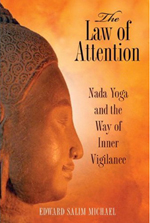Meditation with Slow Walking and Breathing (Part One)
It is not enough to have known higher states of consciousness during meditation only when sitting still. It is necessary to try to maintain this state of self-recollectedness as much as possible in action also, so as to become a channel between the high and the low, bringing down this divine flame to the inferior planes of being and of existence, in oneself as much as in outer life where it is needed. Without the descent of this sublime light into these somber regions of oneself and life, there can be no transformation—either for the human being himself or for the other sentient creatures and things around him that are dependent on him for that.
The accomplishment of this holy aim can take place only through the conscious efforts of a seeker to transform himself first—which calls for a great uphill struggle from him, with a certain self-sacrifice in the service of the Divine. Failing this, the flame of Divine Consciousness will continue, as always, to shine forth its radiance in the higher realms of being, while the lower planes of existence will remain cut off from it, enclosed in a shell of mist and deep obscurity, ignorant of this effulgent light. Thus, one can perhaps begin to understand better the role the human being is destined to fulfill in the Universe, what is required of him, and his importance as a link between the Supreme Cosmic Mind and Creation in all its diverse manifestations.
Even if one touches very high states of consciousness at certain privileged moments during meditation, if one is not ready enough to carry such extra-ordinary experiences, one will find that, as soon as one gets back to any activity in life or comes into contact again with other people, one will almost immediately lose the positive effects of one’s meditation. Weighed down by these seemingly contrary outer conditions, one will be engulfed anew in one’s old customary self; and, perhaps without realizing it at first, one will continue to speak and act as before, mainly through long-ingrained beliefs and habits—nearly always in one’s personal interest through unseen motives difficult to perceive from one’s ordinary level. At such moments, one will merely be “thinking” about, or carrying the “memory” of these higher states of being and lofty sentiments that one may have experienced during meditation without actually living them in the present. …/
That is why it is now necessary to approach a new and important meditation exercise, using as a support for one’s attention an extremely slow and special way of walking in order to learn better to maintain this vital state of self-awareness in movement and, later, in all one’s outer life activities as well. This particular form of meditation cannot be practiced outside but only when alone in private—for reasons that will become obvious to the aspirant when its details are given further on.



